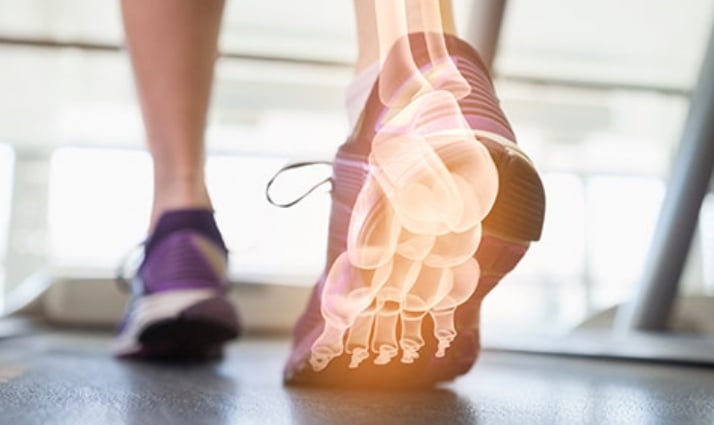Vitamin D Deficiency: Causes, Symptoms, and Best Treatments
February 25, 2025

Vitamin D is sometimes called the sunshine vitamin because your body makes it from cholesterol when your skin is exposed to sunlight. Unfortunately, vitamin D deficiency is one of the most common nutritional deficiencies worldwide. Remember that Vitamin D deficiency symptoms may vary from person to person, often affecting different body parts and overall well-being. Spotting these signs early is crucial for preventing long-term complications and maintaining optimal body function.
Causes
While no single cause for deficiency exists, the overall risk could also be higher due to certain underlying conditions or lifestyle factors. A number of the most common risk factors for vitamin D deficiency are:
- Having dark skin
- Being older
- Having an overweight or obese
- Not eating much fish or dairy
- Living far away from the equator or in regions with little sunlight year-round
- Staying or working indoors
- Working overnight shifts
- Having a chronic renal disorder
- Having gastric bypass surgery
Symptoms
Symptoms of bone pain and muscle weakness can mean you have a vitamin D deficiency. However, for many people, the signs are subtle. Yet, even without symptoms, too little vitamin D can pose health risks.
Frequent Illness or Infection
One of the most important roles of vitamin D is supporting immune health, which helps you ward off viruses and bacteria that cause illness. This is because vitamin D directly interacts with the cells responsible for addressing infection.
Hair Loss
Many foods and nutrients may affect hair health. While stress may be a common explanation for hair loss, severe hair loss could also result from a disease or nutrient deficiency. Studies show that people with this condition associate lower vitamin D levels with more severe hair loss.
Anxiety
Vitamin D deficiency triggers anxiety in people. One review found that levels of calcidiol, a form of vitamin D, were lower in people with anxiety and those with depression.
Muscle Pain
The causes of muscle pain are often difficult to pinpoint. However, evidence suggests that vitamin D deficiency is a potential cause.
Other causes include
- Bone loss
- Impaired wound healing
- Bone and back pain
- Fatigue and tiredness
- Depression
Why is Vitamin D So Important?
Vitamin D is crucial for overall health, particularly in maintaining strong bones and a well-functioning body. Here are some key points why vitamin D is crucial:
- Supports Bone Health – Vitamin D helps regulate calcium and phosphorus levels, which are vital for building and maintaining strong bones.
- Enhances Calcium Absorption – It enables the body to effectively absorb calcium from the intestines, preventing deficiencies that can weaken bones.
- Prevents Bone Disorders – Chronic vitamin D deficiency can lead to conditions like:
- Osteomalacia (soft bones) in adults
- Rickets (weak, deformed bones) in children
- Osteoporosis, which increases the risk of fractures
- Balances Blood Calcium Levels – In cases of deficiency, the body pulls calcium from bones, leading to accelerated bone demineralization and increased fracture risk.
- Prevents Hormonal Imbalances – Deficiency can trigger secondary hyperparathyroidism, where overactive parathyroid glands try to compensate for low calcium, causing further complications.
- Reduces Risk of Hypocalcemia – Low vitamin D levels can cause hypocalcemia (low blood calcium), leading to symptoms such as leg cramps, fatigue, muscle weakness, and even depression.
- Supports Overall Well-Being – Beyond bones, vitamin D plays a role in muscle strength and boosts immune function and mood regulation.
Ensuring adequate vitamin D intake through sunlight, diet, or supplements is crucial for maintaining strong bones and overall health.
Treatment
Treatment and prevention goals are to achieve and maintain adequate vitamin D levels. You may consider eating more foods that contain vitamin D and getting some sun exposure, but you may be told to take vitamin D supplements.
Vitamin D comes in two forms, D2 and D3. D2, also known as ergocalciferol, is derived from plants. It would be best if you had a prescription to get D2. D3 is available without a prescription. It is more easily absorbed than D2 and stays in the body for prolonged doses. Work with your doctor to determine if you need to take supplements and how much you should take.
Prevention
Treating and preventing the absence of vitamin D keeps an adequate vitamin D level within the body. Your doctor will let you know if you would require or keep taking vitamin D supplements. If so, they will also let you know how much you should take.
Getting some exposure to sunshine but not too much: It is vital to know exactly how much sun exposure is required isn’t clear. However, 10 to 15 minutes of sun exposure 2 to 3 times every week to the face, arms, legs or back could also be all that’s needed to soak up an appropriate amount of vitamin D.
One would need more sun exposure if they are older, have a darker complexion, and live in a northern climate.
The use of sunscreen and standing behind a window prevents vitamin D from being produced within the skin. However, it would be best if you remembered that an excessive amount of sunshine increases the chance of skin cancer and ages the skin. Therefore, taking an appropriately dosed D supplement is safer than getting routine sun exposure.
Frequently Asked Questions
1. What happens when Vitamin D3 levels are low?
The body struggles to absorb calcium, weakening bones and muscles and increasing the risk of fractures. It can also cause fatigue, mood changes like depression, and a weakened immune system. If there is a long-term deficiency, it may result in conditions like osteoporosis, osteomalacia, or rickets in children.
2. How can I raise my vitamin D level quickly?
You can quickly raise your vitamin D levels by exposure to sunlight or eating vitamin D-rich foods like fatty fish and fortified dairy. Also, you can take vitamin D supplements as recommended by a healthcare provider.
3. Which foods are high in vitamin D?
Fat-rich fish (salmon, mackerel, tuna), fortified dairy products, mushrooms, egg yolks, and cod liver oil are among foods high in vitamin D. Adding these to your diet helps boost vitamin D levels naturally.







